Loading AI tools
From Wikipedia, the free encyclopedia
Rhinocryptidae is a family of passerine birds in the parvorder Furnariida.[1] Most species in the family are called tapaculos, although some are known as huet-huets, gallitos, bristlefronts, turcas, or bamboowrens.[2] Tapaculos are endemic to the Neotropics and inhabit dense undergrowth in a variety of habitats, from lowland tropical rainforest to páramo and puna grassland high in the Andes. Tapaculos are usually extremely secretive, ground-dwelling birds that are best detected by their vocalizations. Several species of tapaculos may even be flightless.[1] Tapaculos are generally blackish or grayish with rufous-and-black markings on the tail and sides, and are best identified by their calls.[3] Several species of tapaculos are threatened with extinction, with habitat loss being the principal threat to most species.[1] Stresemann's bristlefront is considered to be critically endangered by the International Union for Conservation of Nature, with a maximum estimated population of 49 mature individuals, and another seven species are considered to be endangered.

There are currently 65 species of tapaculos recognized by the International Ornithologists' Union, distributed among 12 genera, 7 of which have only one species. The most species-rich genus is Scytalopus, with 49 species.[2] Tapaculo diversity is highest in the Andes, where a combination of the poor flying ability of Scytalopus tapaculos and complex topography has led to high levels of population isolation, with more than 30 species having been described from the region.[3][4] Despite their high diversity, Scytalopus tapaculos are difficult to differentiate on the basis of appearance and are generally described based on genetic data and differences in vocalizations.[3] The number of known tapaculo species has drastically increased as the amount of genetic and vocal data available has increased, but diversity within the genus is likely still underestimated.[3]
| Conservation status | |
|---|---|
| EX | Extinct (0 species) |
| EW | Extinct in the wild (0 species) |
| CR | Critically Endangered (1 species) |
| EN | Endangered (7 species) |
| VU | Vulnerable (0 species) |
| NT | Near threatened (8 species) |
| LC | Least concern (44 species) |
| Other categories | |
| DD | Data deficient (0 species) |
| NE | Not evaluated (5 species) |
Conservation status codes listed follow the International Union for Conservation of Nature (IUCN) Red List of Threatened Species. Range maps are provided wherever possible; if a range map is not available, a description of the tapaculo's range is provided. Ranges are based on the IOC World Bird List for that species unless otherwise noted. Population estimates are of the number of mature individuals and are taken from the IUCN Red List.
This list follows the taxonomic treatment (designation and order of species) and nomenclature (scientific and common names) of version 13.2 of the IOC World Bird List.[2] Where the taxonomy proposed by the IOC World Bird List conflicts with the taxonomy followed by the IUCN[a] or the 2023 edition of The Clements Checklist of Birds of the World,[6] the disagreement is noted next to the species's common name (for nomenclatural disagreements) or scientific name (for taxonomic disagreements).
The International Ornithologists' Union (IOU) recognizes 65 species of tapaculos in 12 genera;[2] some other authorities recognise as few as 60 species.[5] This list does not include hybrid species, extinct prehistoric species, or putative species not yet accepted by the IOU.
| |||||||||||||||||||||||||||||||||||||||||||||||||||||||||||||||||||||
| Cladogram based on a 2020 study by Harvey et al.[7] |
| Common name | Scientific name and subspecies | Range | IUCN status and estimated population |
|---|---|---|---|
| Ocellated tapaculo | A. orthonyx (Lafresnaye, 1843) Two subspecies
|
Northwestern South America |
LC
|
| Common name | Scientific name and subspecies | Range | IUCN status and estimated population |
|---|---|---|---|
| Chestnut-throated huet-huet | P. castaneus Philippi & Landbeck, 1864 |
Central Chile and west-central Argentina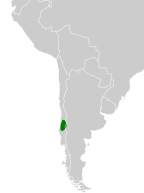 |
LC
|
| Black-throated huet-huet | P. tarnii (King, P. P., 1831) |
Southwestern South America |
LC
|
| Moustached turca | P. megapodius Kittlitz, 1830 Two subspecies
|
Chile |
LC
|
| Common name | Scientific name and subspecies | Range | IUCN status and estimated population |
|---|---|---|---|
| White-throated tapaculo | S. albicollis (Kittlitz, 1830) Two subspecies
|
Chile |
LC
|
| Chucao tapaculo | S. rubecula (Kittlitz, 1830) Two subspecies
|
Southwestern South America |
LC
|
| Common name | Scientific name and subspecies | Range | IUCN status and estimated population |
|---|---|---|---|
| Crested gallito | R. lanceolata (Geoffroy Saint-Hilaire, 1832) Two subspecies
|
South-central South America |
LC
|
| Common name | Scientific name and subspecies | Range | IUCN status and estimated population |
|---|---|---|---|
| Sandy gallito | T. fuscus (Sclater, P. L. & Salvin, 1873) |
Central Argentina |
LC
|
| Common name | Scientific name and subspecies | Range | IUCN status and estimated population |
|---|---|---|---|
| Rusty-belted tapaculo | L. thoracicus (Sclater, P. L., 1865) Three subspecies
|
Western and southwestern Amazon rainforest |
LC
|
| Common name | Scientific name and subspecies | Range | IUCN status and estimated population |
|---|---|---|---|
| Spotted bamboowren | P. guttatus (Ménétriés, 1835) |
Brazil and northeastern Argentina |
LC
|
| Common name | Scientific name and subspecies | Range | IUCN status and estimated population |
|---|---|---|---|
| Slaty bristlefront | M. ater Lesson, R. P., 1831 |
Southeastern Brazil |
LC
|
| Stresemann's bristlefront
|
M. stresemanni Sick, 1960 |
Eastern Brazil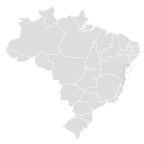 |
CR
|
| Common name | Scientific name and subspecies | Range | IUCN status and estimated population |
|---|---|---|---|
| Ochre-flanked tapaculo | E. paradoxa (Kittlitz, 1830) |
Southwestern South America |
LC
|
| Common name | Scientific name and subspecies | Range | IUCN status and estimated population |
|---|---|---|---|
| Ash-colored tapaculo | M. senilis (Lafresnaye, 1840) |
Northwestern South America |
LC
|
| Common name | Scientific name and subspecies | Range | IUCN status and estimated population |
|---|---|---|---|
| White-breasted tapaculo | E. indigoticus (Wied, 1831) |
Southeastern Brazil |
LC
|
| Bahia tapaculo | E. psychopompus (Teixeira & Carnevalli, 1989) |
Eastern Brazil |
EN
|
| Common name | Scientific name and subspecies | Range | IUCN status and estimated population |
|---|---|---|---|
| Marsh tapaculo | S. iraiensis Bornschein, Reinert & Pichorim, 1998 |
Southern Brazil |
EN
|
| Diamantina tapaculo | S. diamantinensis Bornschein, Maurício, Belmonte-Lopes, Mata & Bonatto, 2007 |
Northeastern Brazil |
EN
|
| Brasília tapaculo | S. novacapitalis Sick, 1958 |
Southern Brazil |
EN
|
| Rock tapaculo | S. petrophilus Whitney, de Vasconcelos, Silveira & Pacheco, 2010 |
Southeastern Brazil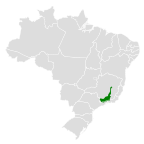 |
LC
|
| Planalto tapaculo | S. pachecoi Maurício, 2005 |
Southeastern Brazil and northeastern Argentina |
LC
|
| Boa Nova tapaculo
|
S. gonzagai Maurício, Belmonte-Lopes, Pacheco, Silveira, Whitney & Bornschein, 2014 |
Southeastern Brazil |
EN
|
| Mouse-colored tapaculo | S. speluncae (Ménétries, 1835) |
Southeastern Brazil |
LC
|
| Dusky tapaculo
|
S. fuscus Gould, 1837 |
Central Chile |
LC
|
| Magellanic tapaculo | S. magellanicus (Gmelin, J. F., 1789) |
Chile and Argentina |
LC
|
| Ancash tapaculo | S. affinis Zimmer, J. T., 1939 |
Western Peru |
LC
|
| White-winged tapaculo
|
S. krabbei Schulenberg, Lane, Spencer, AJ, Angulo & Cadena, 2020 |
North-central Peru |
NE
|
| Loja tapaculo | S. androstictus Krabbe and Cadena, 2010 |
Southeastern Ecuador and northern Peru |
NE
|
| Paramo tapaculo | S. opacus Zimmer, J. T., 1941 |
Central Colombia to south-central Ecuador |
LC
|
| Paramillo tapaculo
|
S. canus Chapman, 1915 |
Western Colombia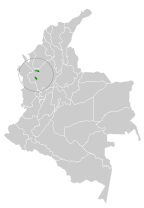 |
NT
|
| White-browed tapaculo | S. superciliaris Cabanis, 1883 Two subspecies
|
Northwestern Argentina |
LC
|
| Zimmer's tapaculo | S. zimmeri Bond, J. & Meyer de Schauensee, 1940 |
Southern Bolivia and northwestern Argentina |
LC
|
| Puna tapaculo | S. simonsi Chubb, C., 1917 |
Southeastern Peru to central Bolivia |
LC
|
| Diademed tapaculo | S. schulenbergi Whitney, 1994 |
Southeastern Peru to central Bolivia |
LC
|
| Vilcabamba tapaculo | S. urubambae Zimmer, J. T., 1939 |
East-central Peru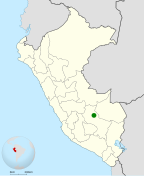 |
LC
|
| Ampay tapaculo
|
S. whitneyi Krabbe et al., 2020 |
Southern Peru |
NE
|
| Jalca tapaculo | S. frankeae Krabbe et al., 2020 |
Central Peru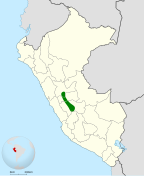 |
NE
|
| Neblina tapaculo | S. altirostris Zimmer, J. T., 1939 |
Northern Peru |
LC
|
| Trilling tapaculo | S. parvirostris Zimmer, J. T., 1939 |
North-central Peru to east-central Bolivia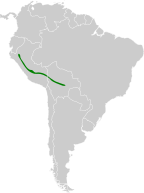 |
LC
|
| Bolivian tapaculo
|
S. bolivianus Allen, J. A., 1889 |
Southeastern Peru to southern Bolivia |
LC
|
| White-crowned tapaculo | S. atratus Hellmayr, 1922 Three subspecies
|
Northwestern South America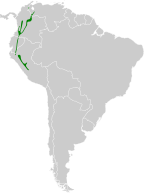 |
LC
|
| Santa Marta tapaculo | S. sanctaemartae Chapman, 1915 |
Northern Colombia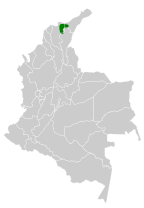 |
NT
|
| Long-tailed tapaculo | S. micropterus (Sclater, P. L., 1858) |
Colombia to northern Peru |
LC
|
| Rufous-vented tapaculo
|
S. femoralis (Tschudi, 1844) |
Central Peru |
LC
|
| Utcubamba tapaculo
|
S. intermedius Zimmer, J. T., 1939 |
North-central Peru |
NE
|
| Large-footed tapaculo
|
S. macropus Berlepsch & Stolzmann, 1896 |
Peru |
LC
|
| Junin tapaculo | S. gettyae Hosner et al., 2013 |
Central Peru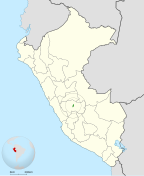 |
NT
|
| Unicolored tapaculo
|
S. unicolor Salvin, 1895 |
West-central Peru |
NT
|
| Tschudi's tapaculo | S. acutirostris (Tschudi, 1844) |
Central Peru |
LC
|
| Blackish tapaculo | S. latrans Hellmayr, 1924 Two subspecies
|
Northwestern South America |
LC
|
| Silvery-fronted tapaculo | S. argentifrons Ridgway, 1891 Two subspecies
|
Costa Rica and Panama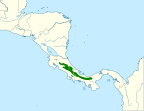 |
LC
|
| Nariño tapaculo | S. vicinior Zimmer, J. T., 1939 |
Northwestern South America |
LC
|
| Tacarcuna tapaculo
|
S. panamensis Chapman, 1915 |
Eastern Panama and northwestern Colombia |
NT
|
| Chocó tapaculo | S. chocoensis Krabbe & Schulenberg, 1997 |
Eastern Panama to northwestern Ecuador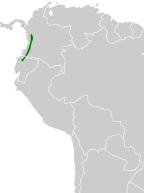 |
LC
|
| Magdalena tapaculo
|
S. rodriguezi Krabbe et al., 2005 Two subspecies
|
Central Colombia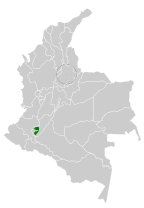 |
EN
|
| Stiles's tapaculo | S. stilesi Cuervo et al., 2005 |
Central Colombia |
LC
|
| Tatama tapaculo | S. alvarezlopezi Cuervo et al., 2005 |
Western Colombia |
NT
|
| El Oro tapaculo
|
S. robbinsi Krabbe & Schulenberg, 1997 |
Southwestern Ecuador |
EN
|
| Caracas tapaculo
|
S. caracae Hellmayr, 1922 |
Northern Venezuela |
LC
|
| Pale-bellied tapaculo | S. griseicollis (Lafresnaye, 1840) Three subspecies
|
Northwestern South America |
LC
|
| Brown-rumped tapaculo | S. latebricola Bangs, 1899 |
Northern Colombia |
NT
|
| Perijá tapaculo | S. perijanus Avendaño et al., 2015 |
Perijá Mountains |
NT
|
| Mérida tapaculo
|
S. meridanus Hellmayr, 1922 Two subspecies
|
Northwestern Venezuela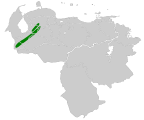 |
LC
|
| Chusquea tapaculo | S. parkeri Krabbe & Schulenberg, 1997 |
Northwestern South America |
LC
|
| Spillmann's tapaculo
|
S. spillmanni Stresemann, 1937 |
Northwestern South America |
LC
|
Seamless Wikipedia browsing. On steroids.
Every time you click a link to Wikipedia, Wiktionary or Wikiquote in your browser's search results, it will show the modern Wikiwand interface.
Wikiwand extension is a five stars, simple, with minimum permission required to keep your browsing private, safe and transparent.